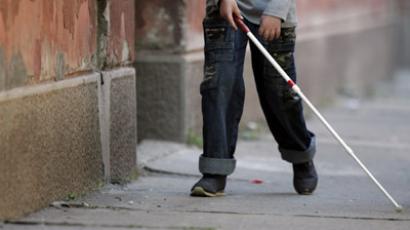Most Taser shots in UK aimed at chest despite ‘risk of potential serious injury or death’

More than half of all Taser shots discharged by UK police target the chest of the arrestee, despite warnings that this could lead to “serious complications” involving the heart. Last week, a UK man died after being tasered, due to a “medical episode.”
Through a Freedom of Information (FOI) request, the Guardian newspaper was able to obtain statistics on the use of the electroshock weapon dating back to 2009, from 18 of UK’s 45 police authorities.
The data revealed that out of 906 total charges unleashed, 518 were aimed at the chest. This constitutes 57 per cent of total uses.
It also directly contradicts advice given by the electroshock weapon’s manufacturer.
"When possible, avoid targeting the frontal chest area near the heart to reduce the risk of potential serious injury or death,” says the Taser International training manual.
"Serious complications could also arise in those with impaired heart function or in those with an implanted cardiac pacemaker or defibrillator."
Unlike a stun gun, which shocks on impact, tasers fire two electrodes from a distance that lodge themselves in the skin. The damage is done by an electric impulse that upsets the rhythm of the heart, or limits the function of their implanted pacemaker.
Instead, the preferred aim area to stun, but not injure, the
suspect is the back.

Last Wednesday, police broke into the house of 23-year-old ice cream factory worker Jordan Begley and tasered him in his front room. Begley was reportedly having a heated argument with a neighbor, during which he may have been in possession of a knife.
He collapsed and died within minutes, in what the police themselves described as a “medical episode” – suspected to be a heart attack.
Begley was recently diagnosed with a cardiac disorder. A
post-mortem examining the cause of death has proved
“inconclusive.”
Begley became the tenth person in the UK to die after being
stunned by a Taser since the weapons were taken up by the police
force in 2004. However, many died from other injuries, and no
deaths have been linked beyond doubt to the electric charge
itself.
Police say they were informed after an internal investigation
that the risk of medical repercussions from Taser use is “very
low,” claiming there is little need or practical possibility
of "adjusting our point of aim.”
"When you've got a violent assailant who is facing you, coming
towards you and you have to make a split second decision whether
to use Taser or not, the chances are that clearly you're going to
aim for the torso and it may well be that one or both of the
barbs will attach within the chest area,” said Simon
Chesterman, deputy chief constable of West Mercia police and UK
police lead expert on Taser use.
An earlier FOI request showed that Taser use rose by 66 per cent
in 2010, with more than 1,300 uses. The data was gathered from
the latest available UK figures, published in March 2011. Since
then, Tasers have been issued to an increasing number of police
authorities in a bid to reduce the risk to on-duty officers.














